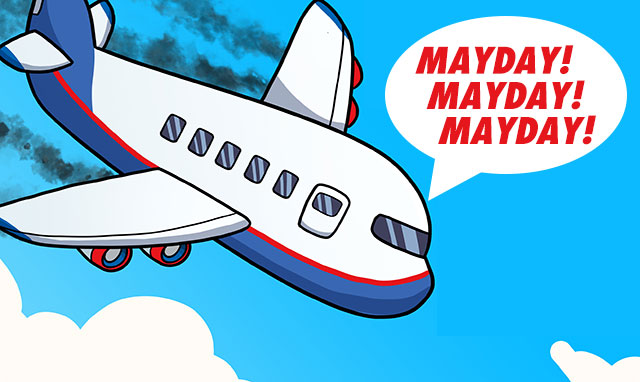The origin of the distress call “Mayday” can be traced back to the early 20th century. It is derived from the French word “m’aider,” which means “help me.” The use of “Mayday” as an international distress signal was established in 1923 at the International Radio Telegraphic Convention in London.
The idea was to have a standardized phrase that could be easily understood and recognized by speakers of various languages in emergency situations. The choice of “Mayday” was influenced by the fact that it sounds like the French word for help, and it is distinct and unlikely to be confused with other words in different languages.
The use of “Mayday” is primarily associated with aviation and maritime communications, where it is used to indicate a life-threatening emergency. It has since become a universally recognized distress call and is part of international radio communication procedures.
How did Mayday become universal?
The adoption of “Mayday” as a universal distress call was facilitated through international agreements and regulations governing radio communications. The process began in the early 20th century as the need for a standardized distress signal became apparent in the fields of aviation and maritime communication.
The key steps in the universalization of “Mayday” include:
International Radio Telegraphic Convention (1923): The first significant step took place during the International Radio Telegraphic Convention held in London in 1923. At this conference, the use of “Mayday” as a distress call was established as a standard.
International Telecommunication Union (ITU): The ITU, a specialized agency of the United Nations responsible for issues related to information and communication technologies, played a crucial role in the standardization of communication protocols, including distress signals. The ITU is involved in developing and maintaining global regulations for radiocommunications.
International Civil Aviation Organization (ICAO): The ICAO, a specialized agency of the United Nations, was established in 1944 to set international standards and regulations for aviation safety, security, efficiency, and environmental protection. “Mayday” became an integral part of aviation distress communication through ICAO’s efforts to standardize procedures.
International Maritime Organization (IMO): Similar to the ICAO, the IMO is a specialized agency of the United Nations responsible for regulating shipping. It adopted “Mayday” as the international standard distress call for maritime use.
Through these international organizations and their efforts to standardize communication procedures, “Mayday” became widely accepted and recognized across the globe. Pilots, mariners, and communication professionals are trained to use “Mayday” in emergency situations, contributing to its universal adoption. The simplicity and distinctiveness of the word across multiple languages further facilitated its global acceptance as a clear and unambiguous distress signal.
Who came up with Mayday
The adoption of “Mayday” as a distress signal was a collaborative effort rather than the creation of a specific individual. The decision to use “Mayday” to signal distress was made at the International Radio Telegraphic Convention held in London in 1923. The conference brought together representatives from various countries to establish international standards for radio communication, particularly in the fields of aviation and maritime operations.
During the convention, it was recognized that a universal distress call was needed to avoid confusion and ensure a prompt response in emergency situations. The French phrase “m’aider,” meaning “help me,” was chosen as the basis for the distress call. The word “Mayday” was created to sound like the French term, making it easily recognizable and distinct.
So, while there isn’t a single individual credited with coming up with “Mayday,” it emerged from the collaborative efforts of international representatives at the 1923 convention who sought to establish a standardized distress signal for radio communication.




